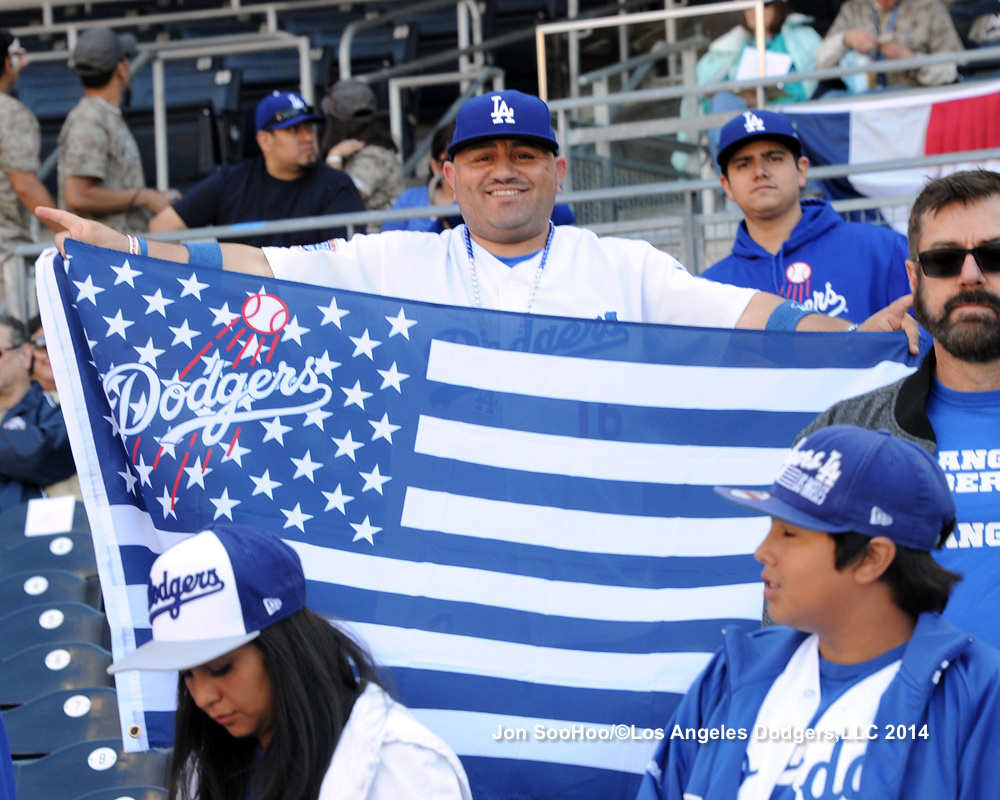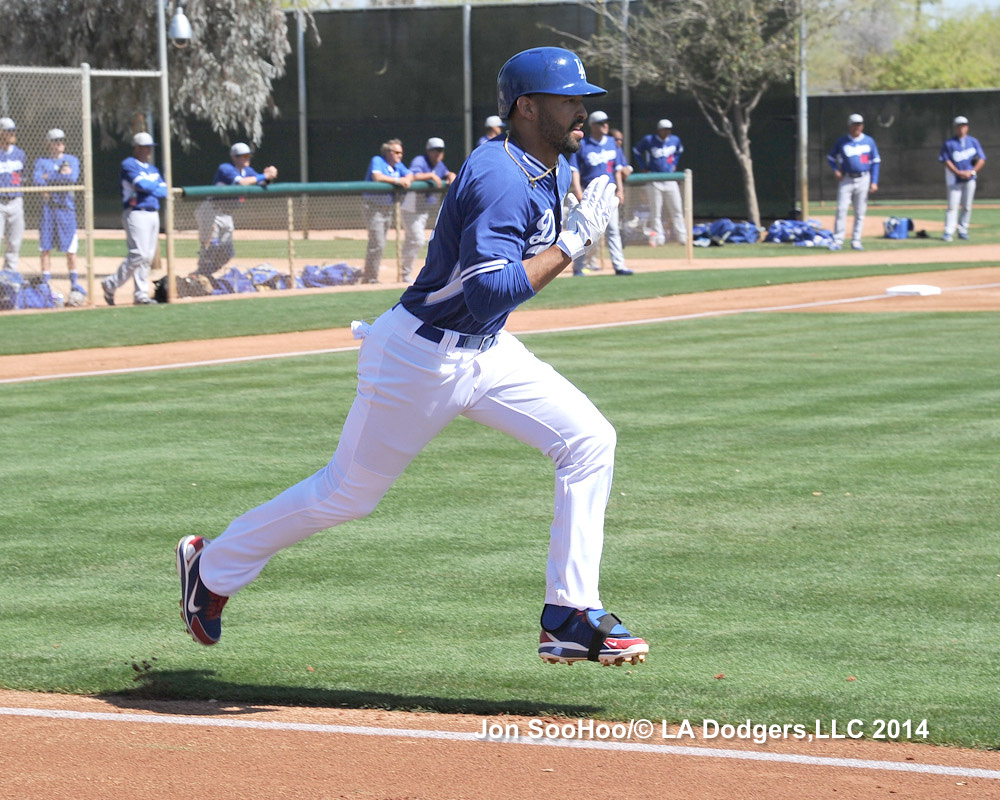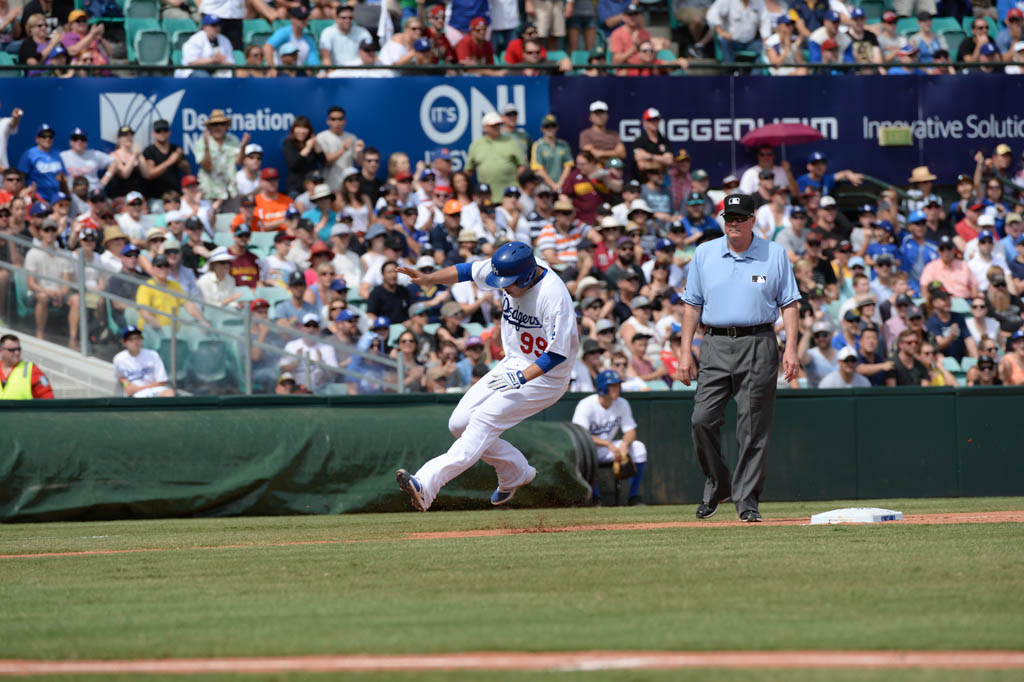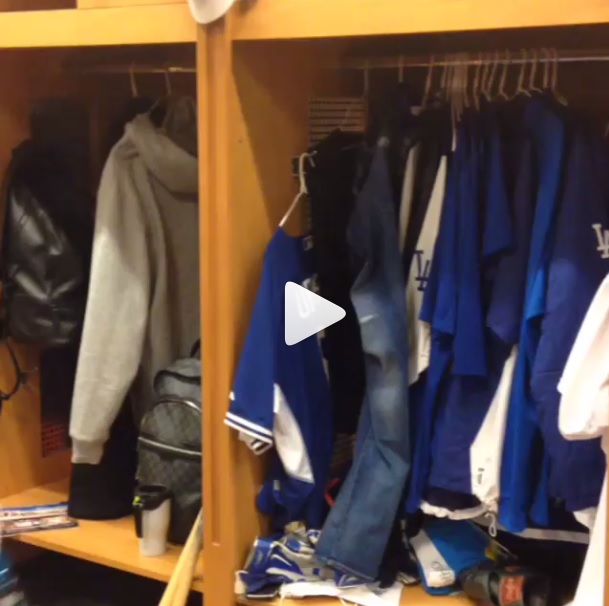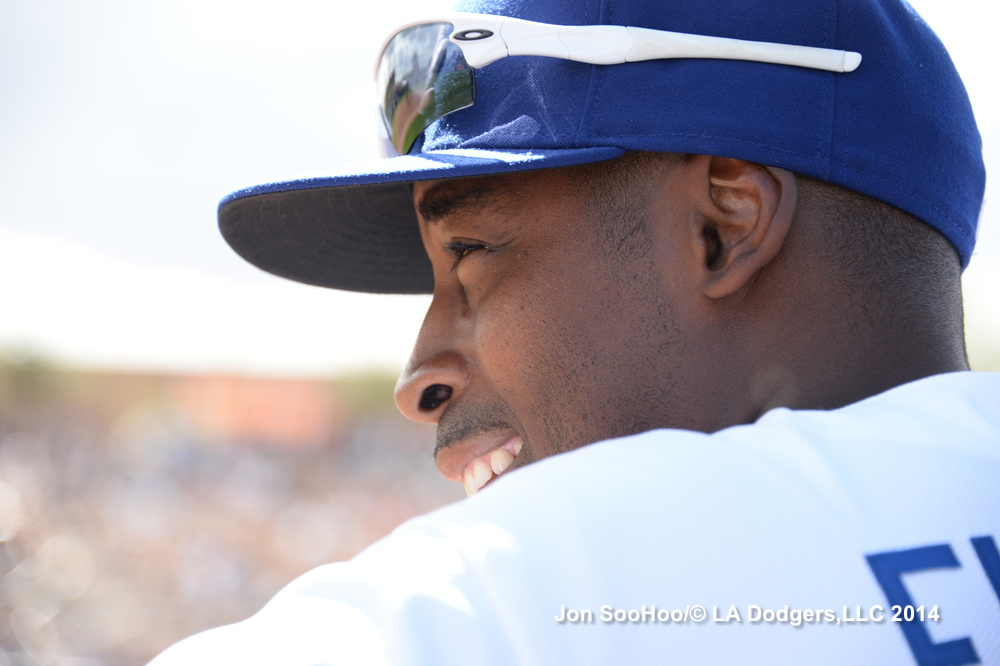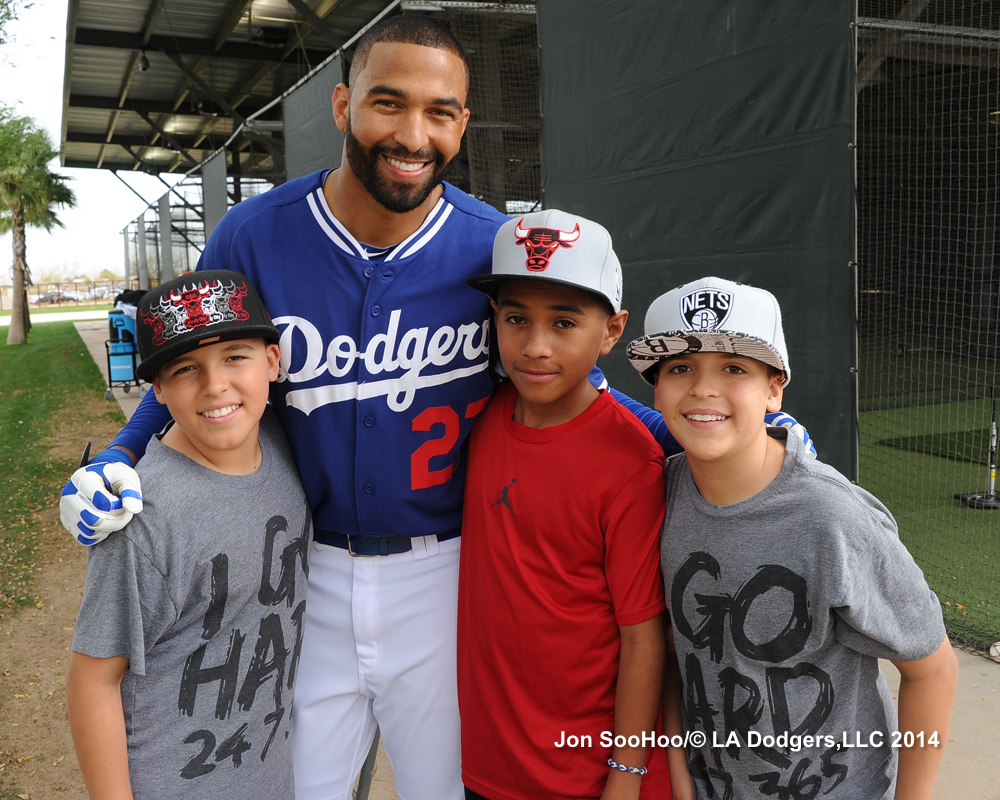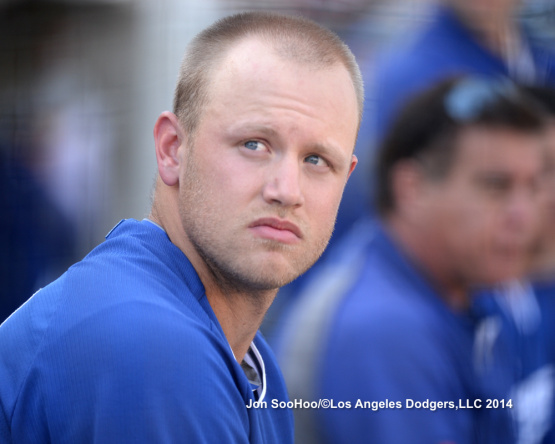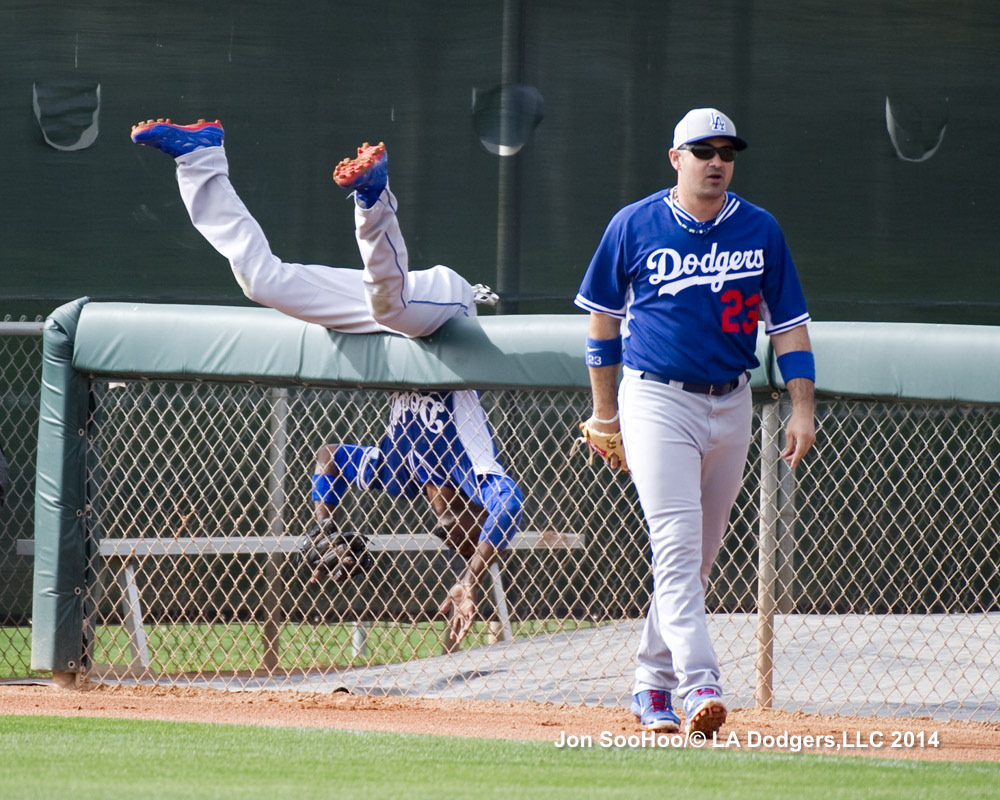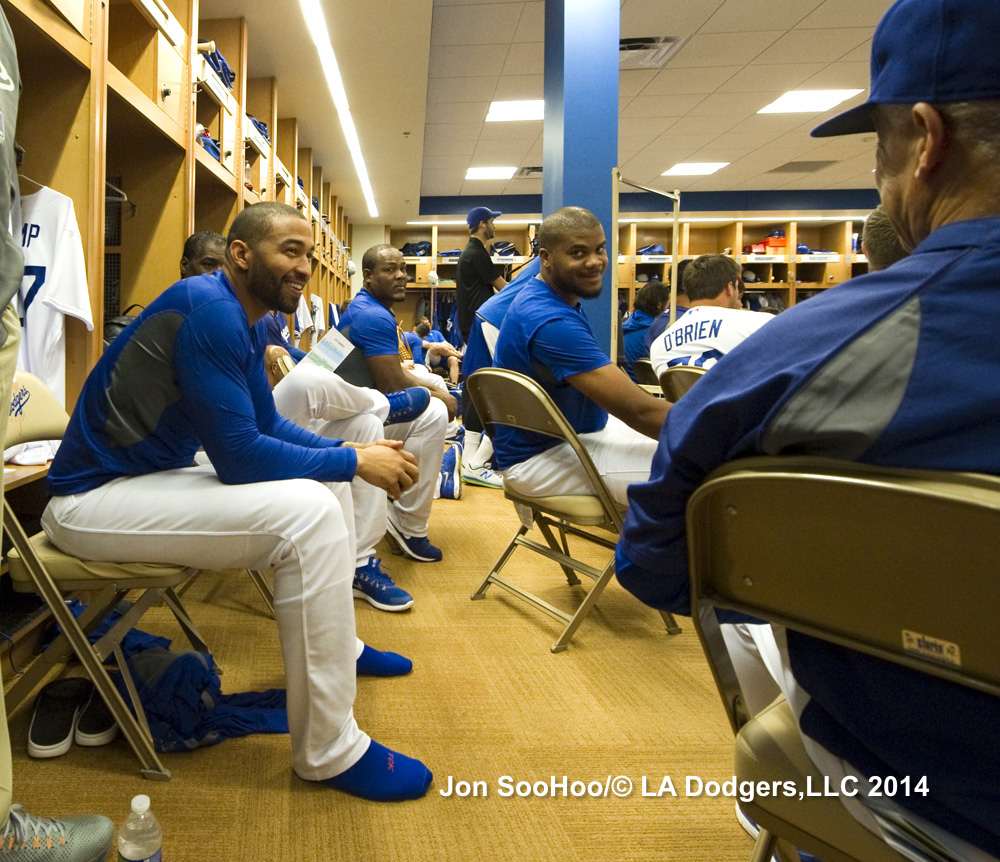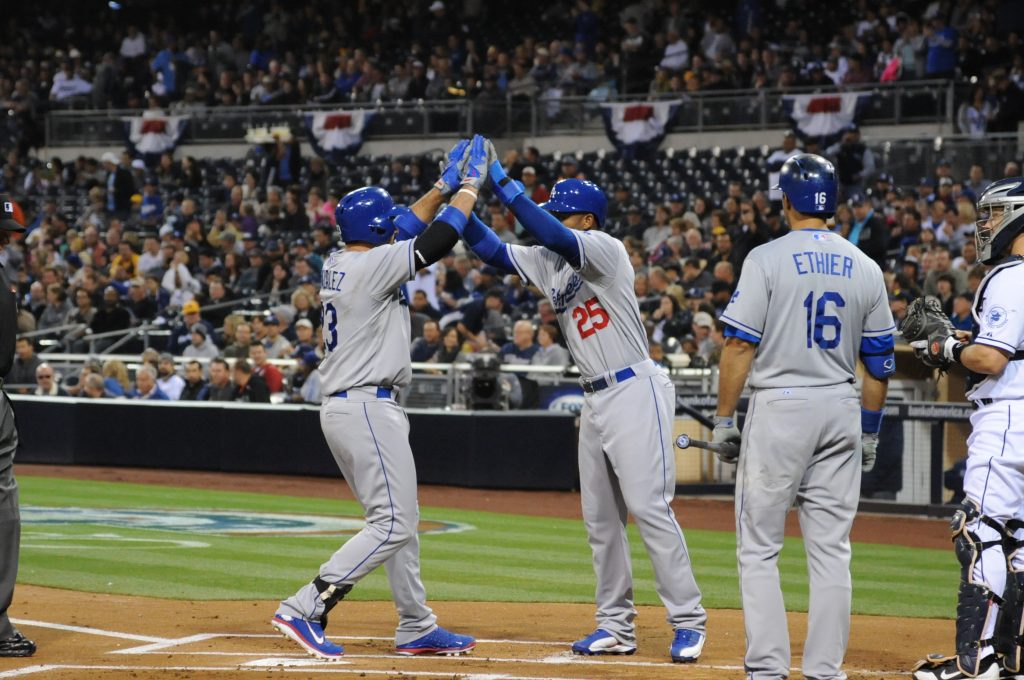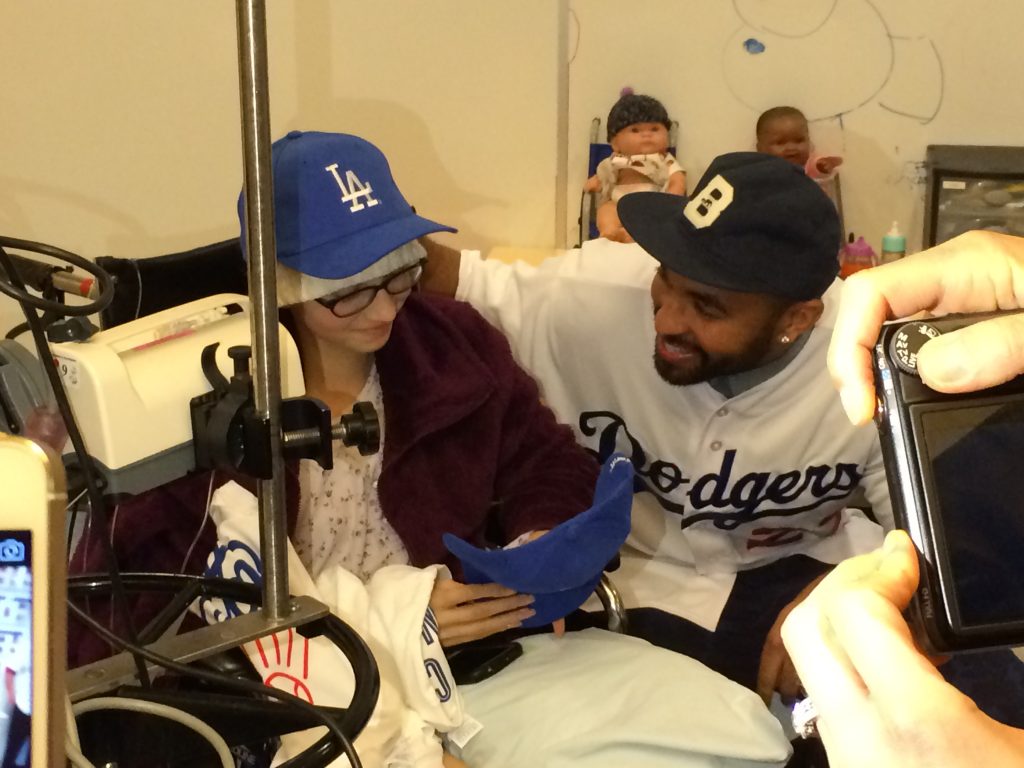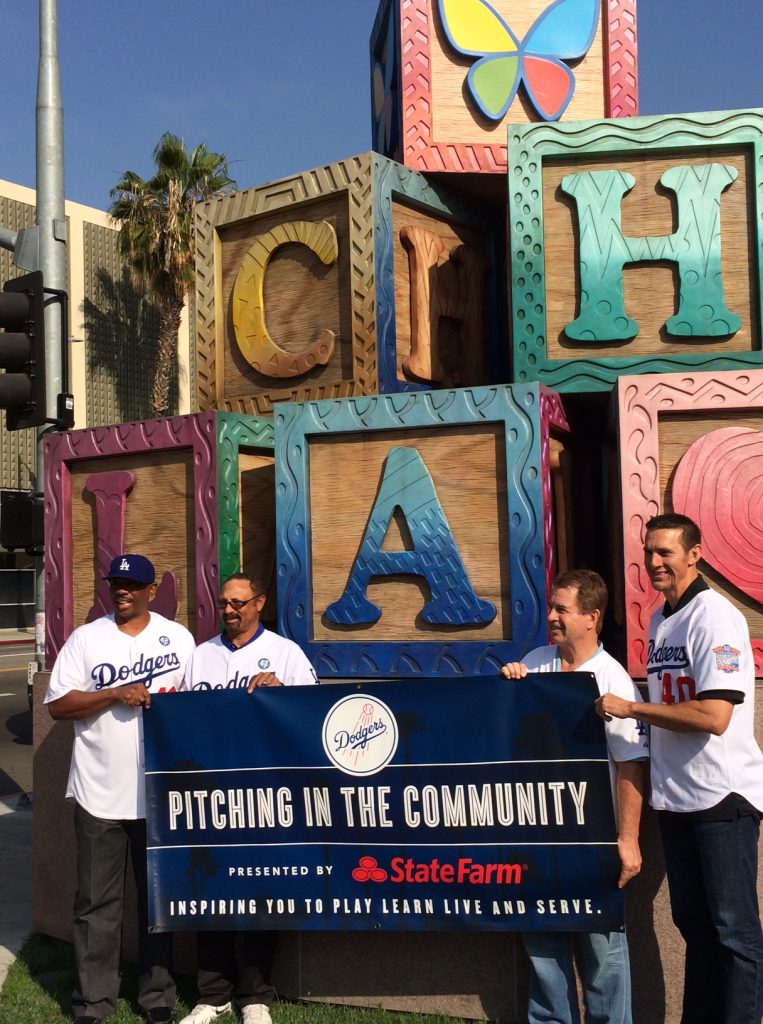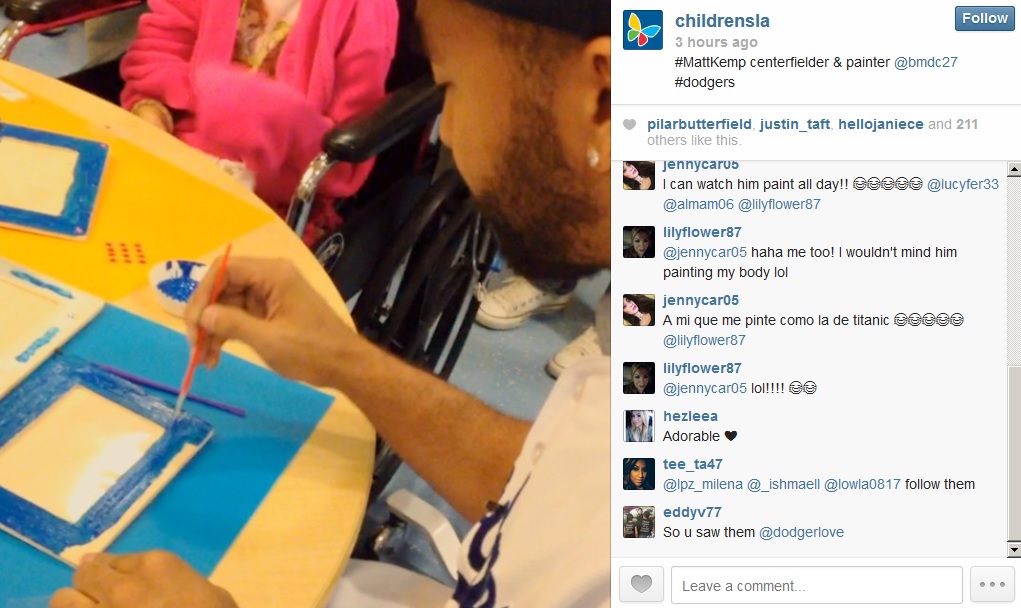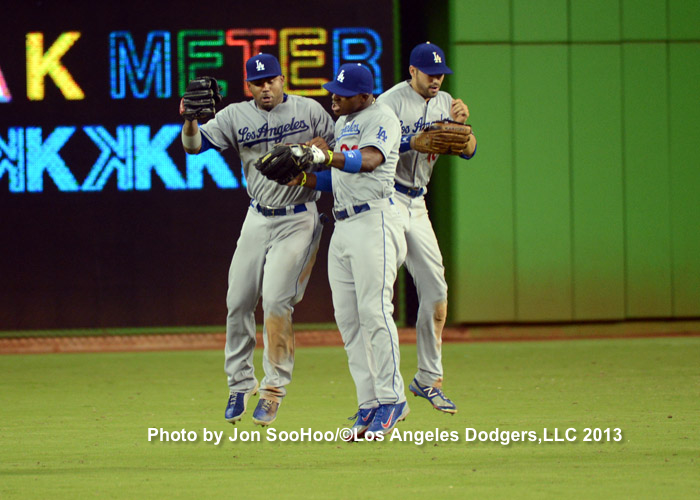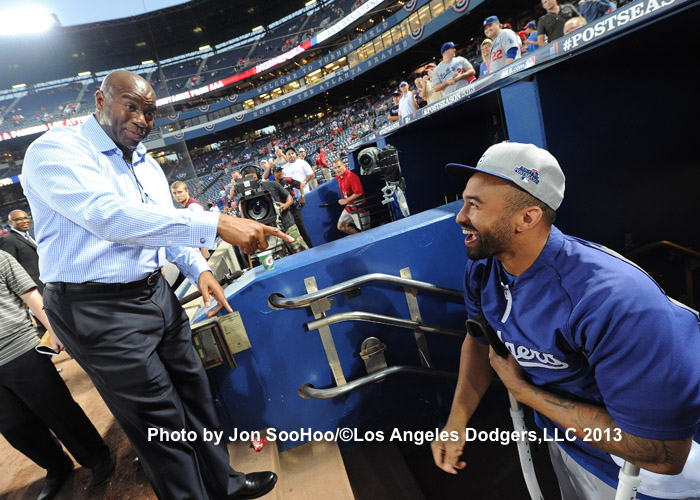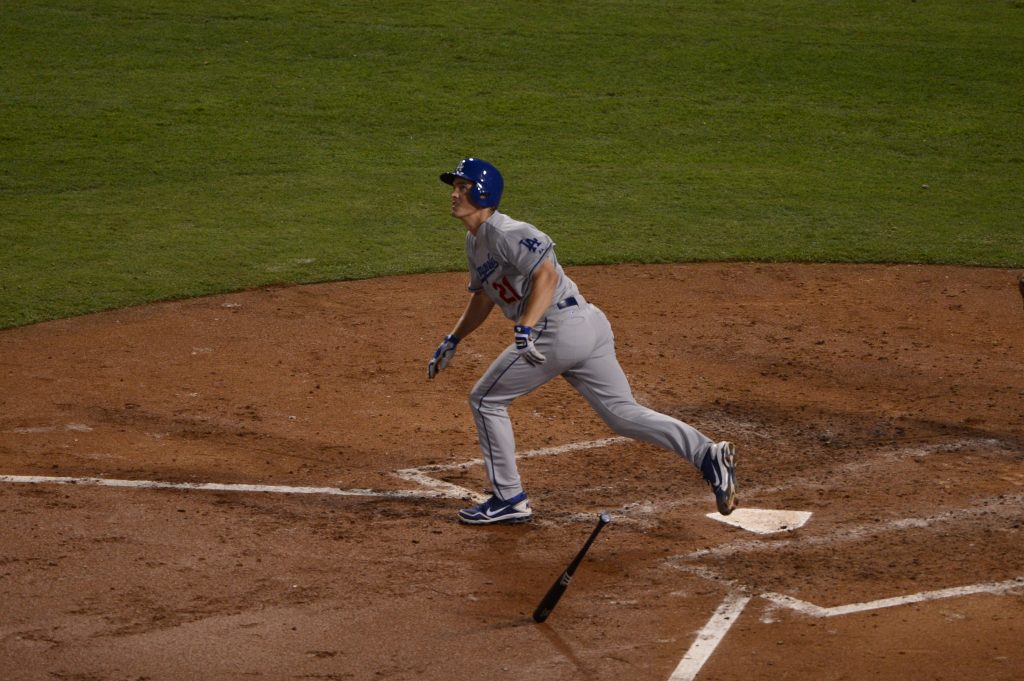
Jon SooHoo/©Los Angeles Dodgers, LLC 2013
By Jon Weisman
At first, when the run that became the Dodgers’ 42-8 midseason gambol began last year, it merely solved the dilemma of “This team can’t be this bad.” Los Angeles had spent the better part of 2½ months taking jokes that it was the worst team money could buy, and so when the Dodgers won six in a row to just to improve to 36-42, there was a sense that a modicum of balance was being restored. Only six games below .500? OK, maybe the team could be that bad.
The Dodgers were in last place, a position that seemed further justified when a 16-1 trashing by Philadelphia on June 28 ended the initial winning streak, their first of the season longer than three games, with a tremendous thud. The Dodgers’ final pitcher that day was utility player Skip Schumaker, who threw an inning of shutout ball – for the second time in 2013. That the Dodgers had twice need to turn to Schumaker said a lot about their struggles, and yet didn’t begin to tell the full story.
Injuries were such a big part of it. Hanley Ramirez was only one of many. Matt Kemp, bothered sequentially by three separate injuries, including lingering effects on his labrum from a 2012 collision with a Coors Field outfield wall, had a year so star-crossed, he might as well have been considered to be on walkabout. Carl Crawford, himself recovering from 2012 Tommy John surgery, gingerly made it back to the lineup after missing much of 2012, though not without his own 30-day stay on the DL. Andre Ethier stayed on the active roster despite a trip to the hospital to investigate a slow-healing bruise that had prompted fears of serious, limb-threatening malady. With Yasiel Puig (a latter-day Pete Reiser in the way he seemed like a collision waiting to happen), the Dodgers had four starting outfielders on paper, but only once before rosters expanded in September were all four active for the same game – and in the ninth inning of that one, Kemp gnarled his ankle sliding into home with the Dodgers ahead, 9-2, not even completing his first game back from his second DL stint.
Dodger pitchers offered little in way of contrast. Starting pitcher Chad Billingsley, putting off surgery after his 2012 season was cut short in August, succumbed after two starts in 2013. Josh Beckett was shaky, allowing a 5.19 ERA in eight starts (6.75 in the final five) before going on the disabled list with both a groin injury and tingling in his right arm, diagnosed as thoracic outlet syndrome and culminating in season-ending surgery to remove a rib and relieve pressure on his nerves. Chris Capuano, slated for the bullpen in Spring Training because of a perceived overload of starting pitchers for Los Angeles (a perception, it is to laugh, that lasted about two seconds), made two trips to the disabled list in 2013, as did Stephen Fife, the 26-year-old ticketed to the minors who had a 2.47 ERA in his first nine major-league starts when he wasn’t sidelined with bursitis.
Most of these injuries were taken with resignation, the inevitability of baseball in general and the Dodgers in particular. Kemp’s status, given his importance in the lineup – especially before Puig and Ramirez began their dance in June – was the one genuine frustration. But nothing vexed more than what happened to Zack Greinke.
The most expensive pitcher in Dodger history to date, Greinke was critical in the Dodger plans to mitigate concerns about offense with tough moundswork. Despite a Spring Training that had some hint of elbow soreness, Greinke was ready to go when the regular season began, In his first start as a Dodger, Greinke shut out the Pirates for 6⅓ innings of a 3-0 victory and held a 2-1 lead going into the sixth inning of his second outing, in San Diego.
Carlos Quentin was the batter. Greinke alternated balls outside the zone with swinging strikes, and the count went full. The next pitch sailed inside. Quentin turned to his right, and the ball struck him on his left arm below the right shoulder. Although there had been an 0-2 pitch by Padres starter Jason Marquis near the head of Matt Kemp in the first inning, the game scenario didn’t indicate intent to harm on Greinke’s part. But as the baseball world was soon to learn, Quentin – in his mind, at least – had a running vendetta with Greinke. He took a step toward the mound. Greinke slung out an undisclosed word or three in response, and Quentin charged.
[mlbvideo id=”26208555″ width=”550″ height=”318″ /]
Greinke’s options at that moment were few and far from ideal. He could run away, at least until others were able to protect him. He could cock a fist and fight fire with fire. What he chose was what seemed the least horrible of horrible choices – he dropped his glove, lowered his upper torso as if he were about to go bodysurfing in the Pacific, and faced the charging Quentin, who drove into him with the same arm that had been hit by the baseball four seconds earlier.
From the melee that followed, Greinke emerged with what the Dodgers announced after the game was a fractured left collarbone. Though the Dodgers had won the game to improve their record to 6-3 on the season, the postgame was filled with anger and depression. Los Angeles then lost seven of its next eight games and went 10-19 with Greinke sidelined.
Greinke returned to the mound three weeks sooner than the initial eight-week forecast suggested, but he wasn’t a consistent pitcher. From May 15 through Independence Day, Greinke had a 4.84 ERA in 10 starts, averaging 5⅔ innings per start. He, like his teammates, had to figure it out, to dig themselves out of a hole.
Baseball doesn’t play like the lottery. You don’t change your fortunes in one play. You can have the game of your life, or the week of your life, but it’s just one game, just one week. You have to keep grinding, day after day after day. The excuses don’t matter. They are explanations, but no one’s really interested in explanations. People want results.
Injuries? Yeah, we understand that injuries hurt. What else is new? You need to beat your opponent, and if you can’t do that, we’ll see you next year. Get better at the game, get some luck, get whatever it takes. Baseball’s Shawshankism: Get busy winning, or get busy losing.
Somehow, the Dodgers got busy winning. Day after day after day.

